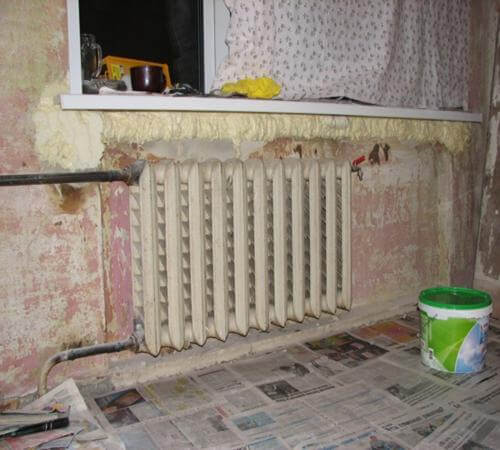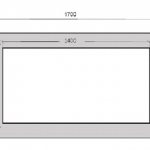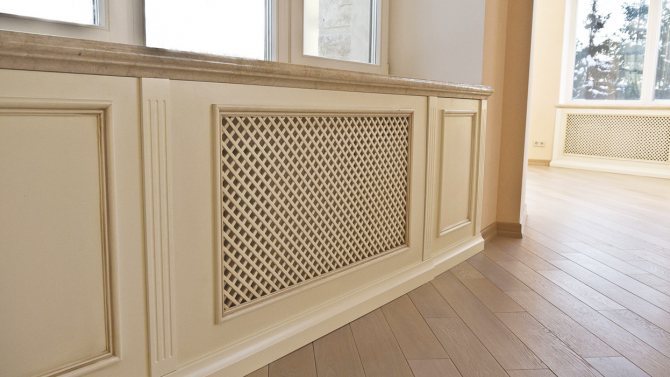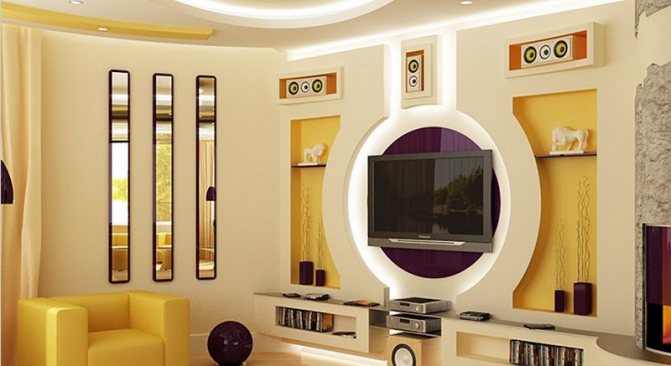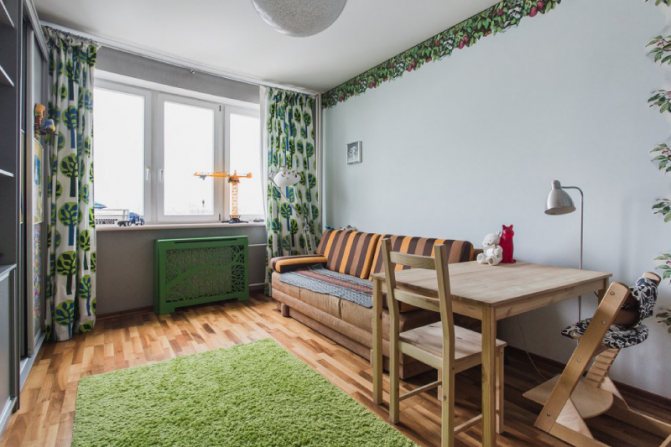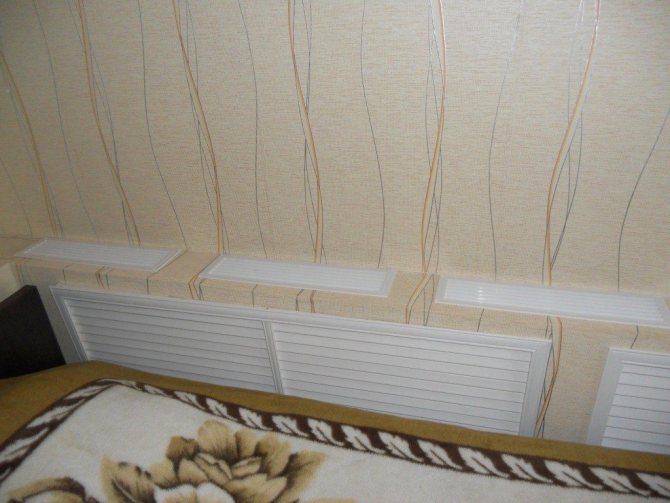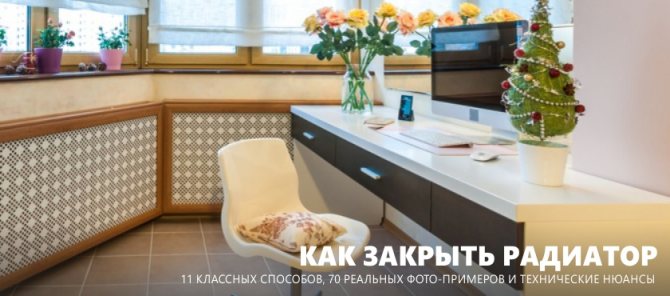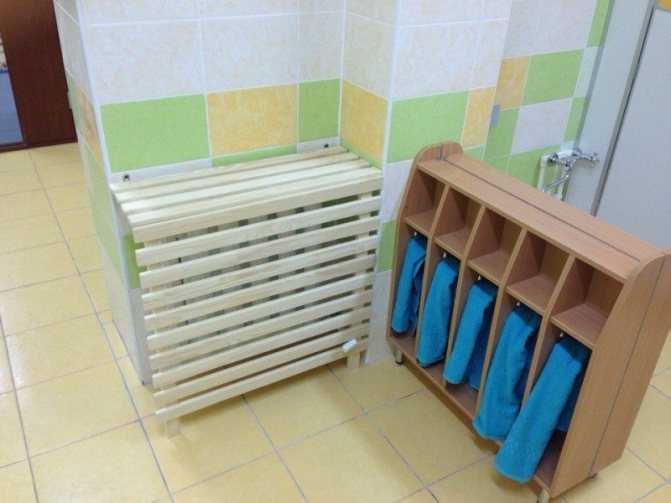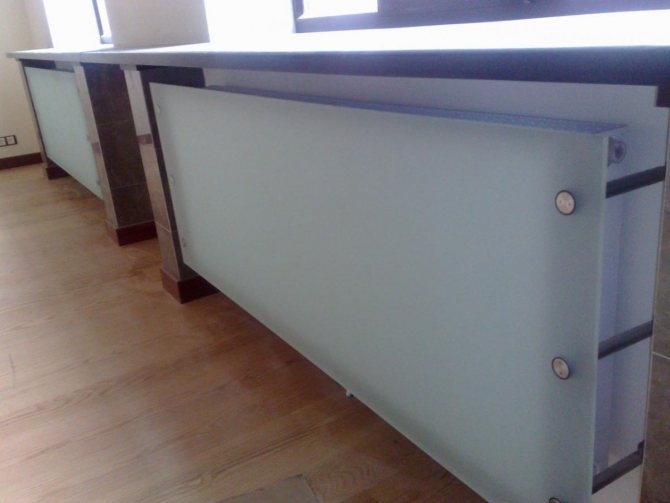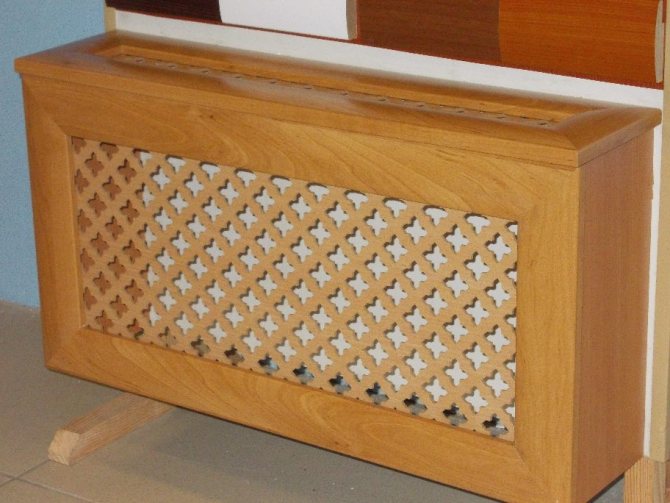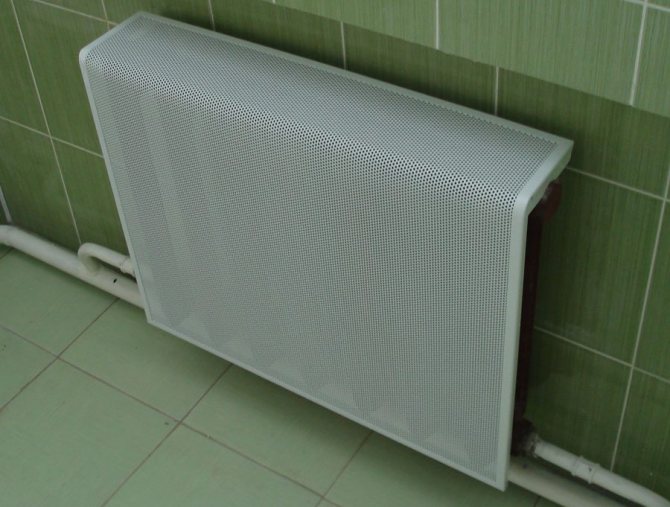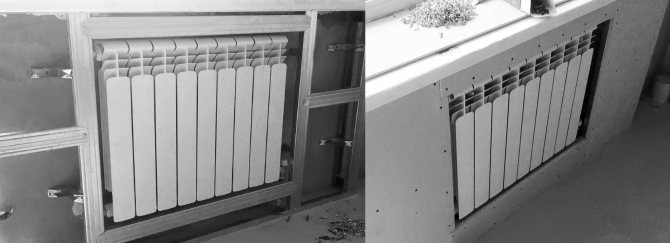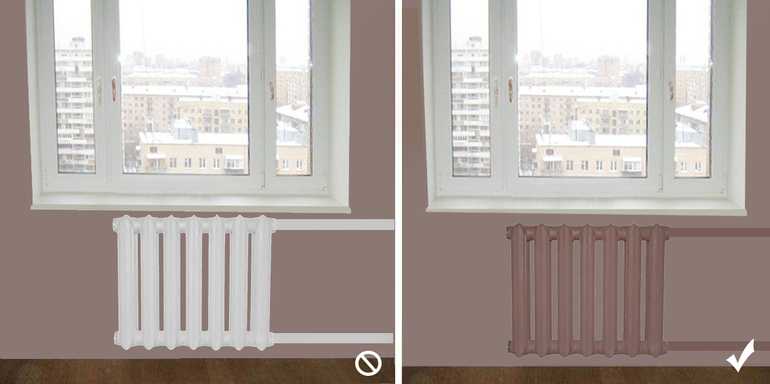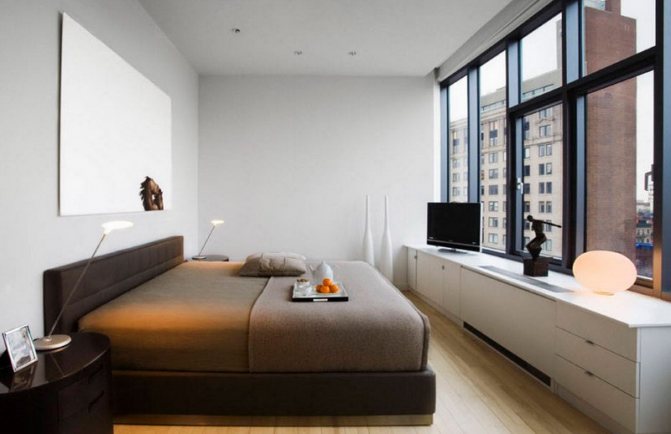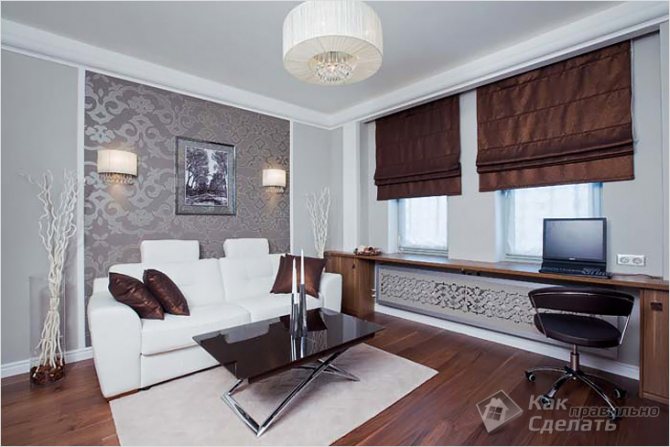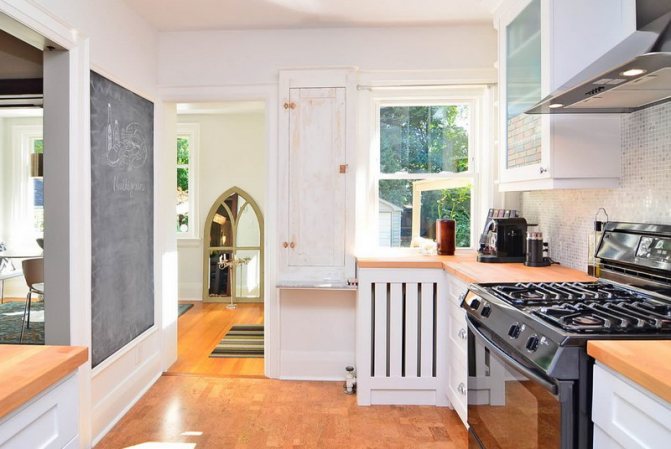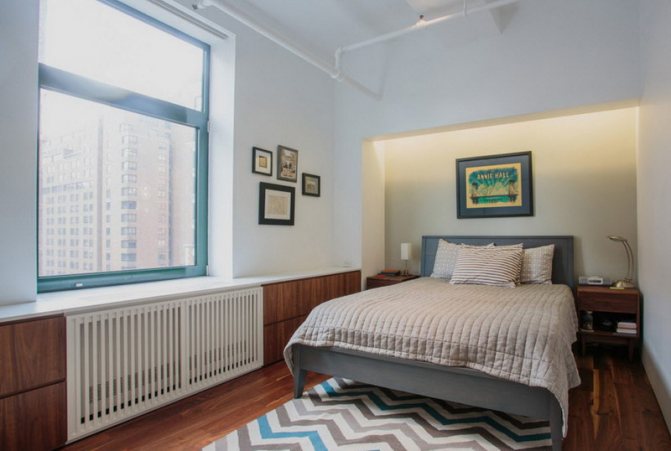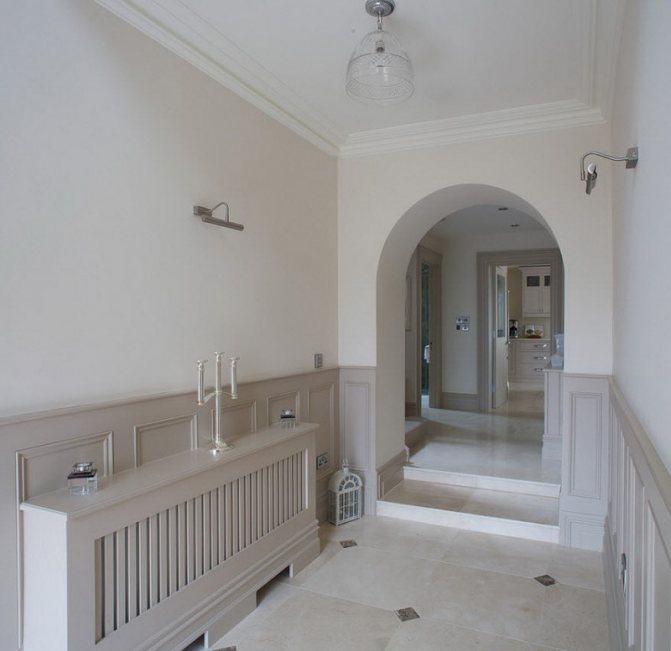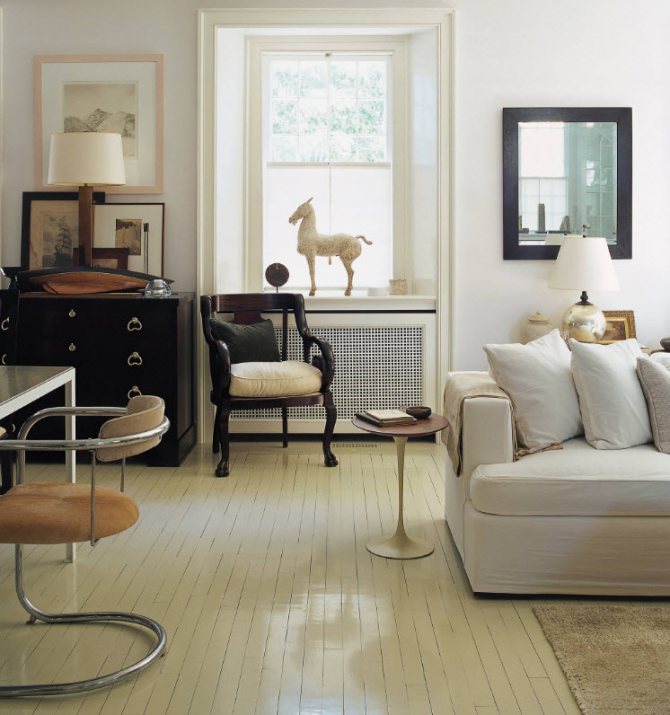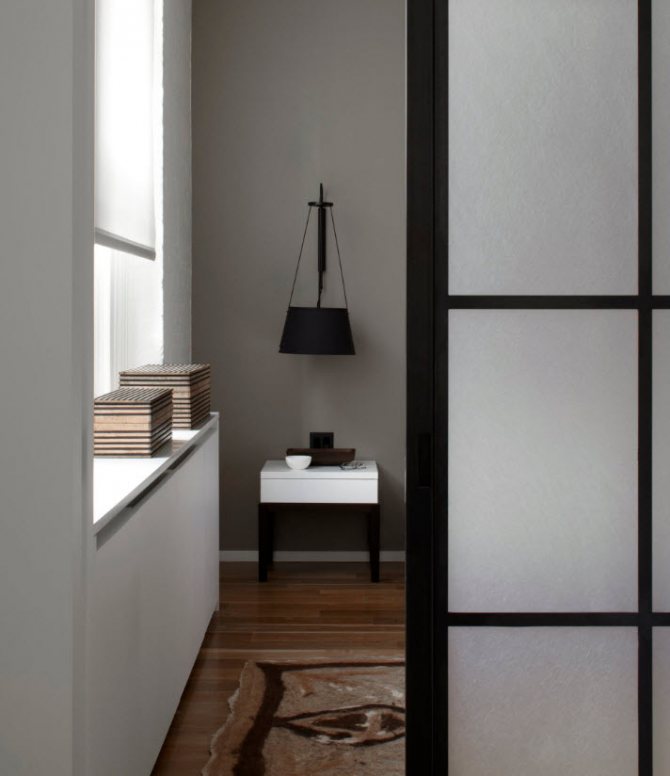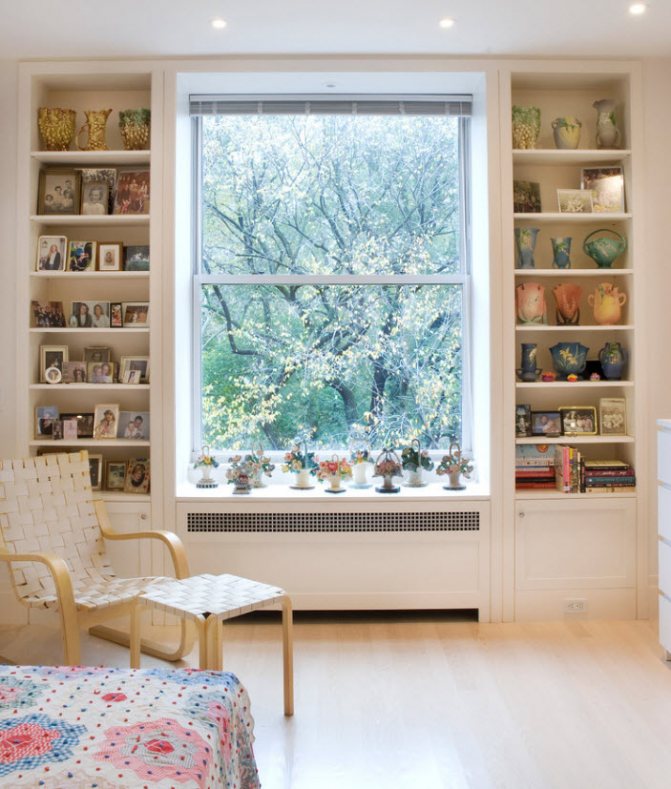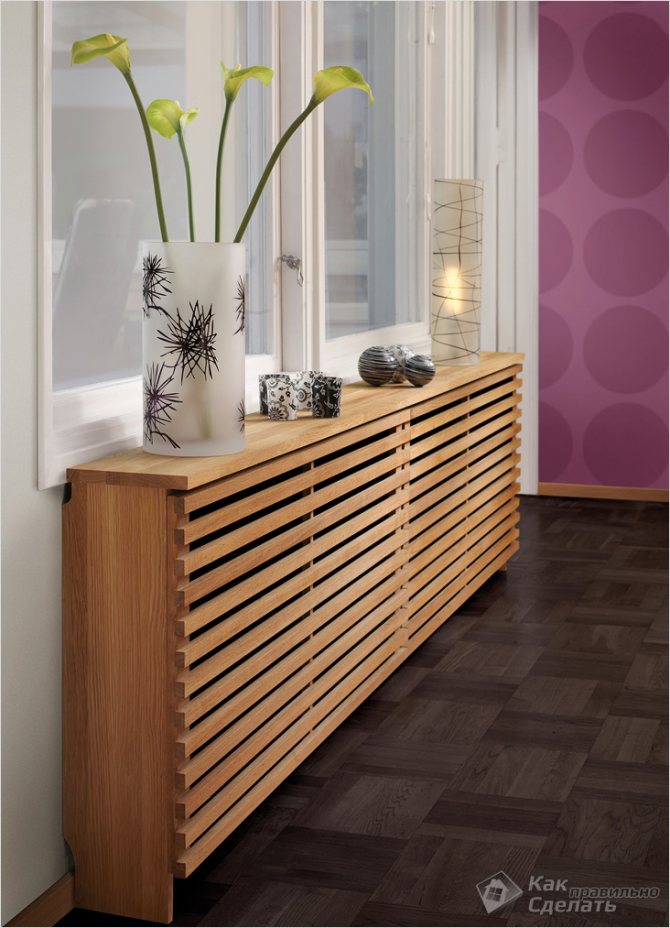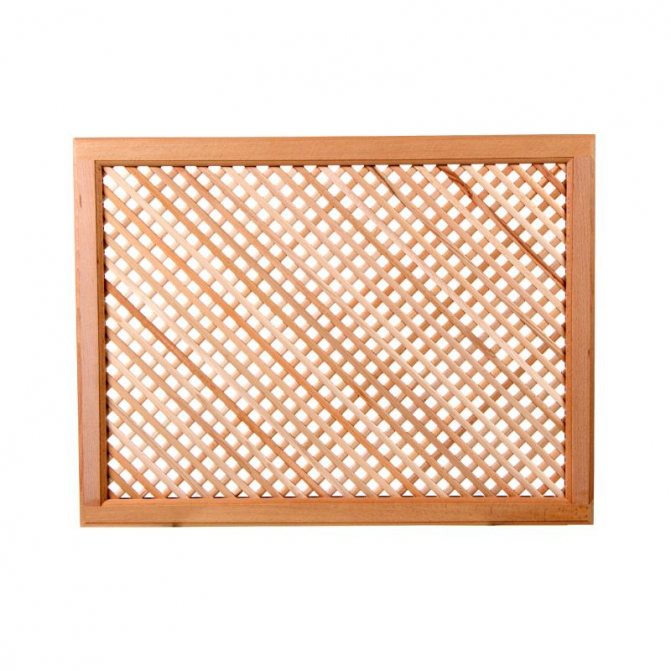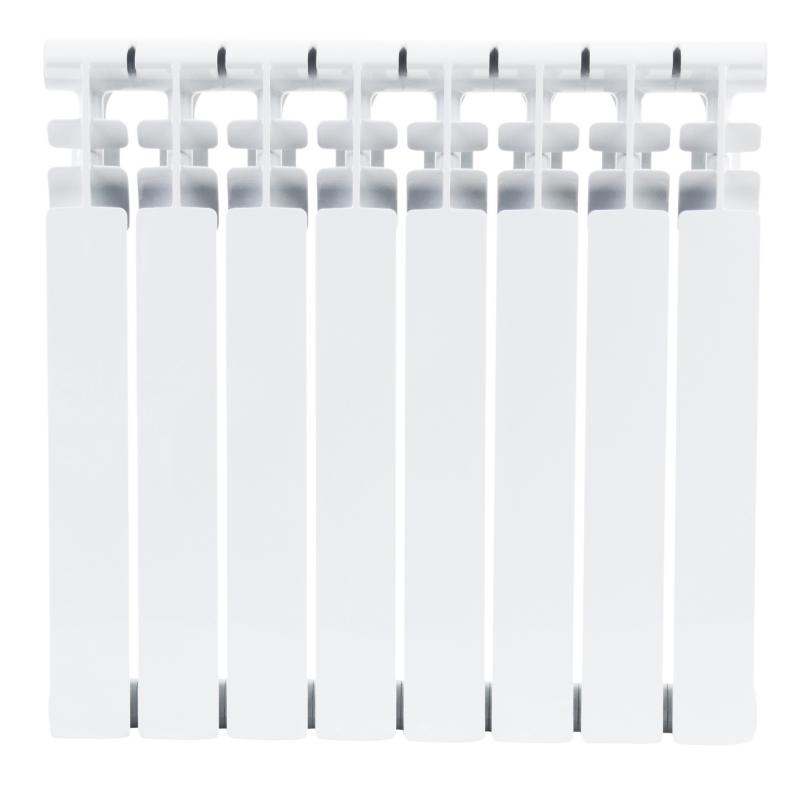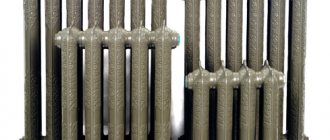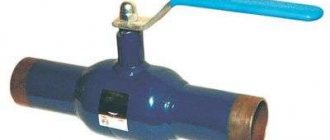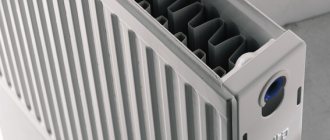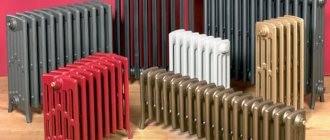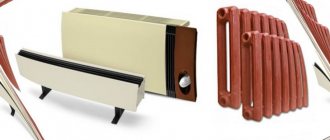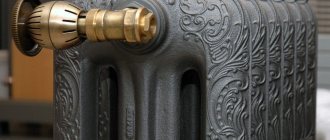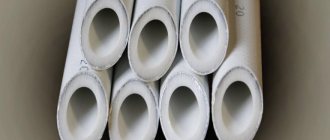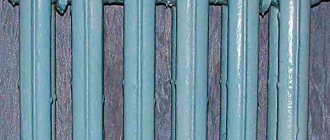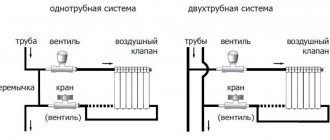Why does the chest hurt during pregnancy
A pulling and aching sensation in the spinal region and lower abdomen accompanies a woman for almost the entire pregnancy. To a greater extent, this is manifested already at the 5th month of gestation. Although sometimes the lower back hurts by the end of the first trimester. The appearance of pain syndrome is facilitated by both physiological and pathological factors.
Physiological causes
Along with the enhanced metabolic processes, the hormonal background is completely rebuilt. The physiological causes of pain include the following:
- the pressure of the growing uterus on the bone segments of the tailbone and pelvis, which affects the condition of the spinal column (it is often in tension and bends);
- insufficient amount of trace elements (phosphorus and calcium);
- prolonged stay in a standing position, mainly pain is felt in the 3rd trimester, since the abdomen is already large enough and the spinal column is experiencing overload;
- Braxton-Hicks training contractions (back aches and pulls the stomach like during menstruation, while it is hard for a woman to breathe, after a while this condition passes).
Pathological phenomena
When pain in the vertebral zone is accompanied by uncharacteristic discharge, as well as cramping seizures, an urgent need to consult a gynecologist. In some cases, this condition is life-threatening for the child, since a spontaneous abortion or early birth can begin at any time.
Each expectant mother consulted her doctor with a back pain problem. Any qualified specialist will answer that back and lower back pains are associated, first of all, with the preparation of the woman's body and body for the birth of a baby.
In women in the early stages of pregnancy, frequent pulling pains in the lumbar region are often observed. Painful sensations can be the result of changes in the body associated with the onset of pregnancy. But the risk of spontaneous abortion should not be ruled out. Therefore, in any case, you must contact a gynecologist.
What is the reason? Let's see ...
In the early stages of pregnancy, the fetus does not have significant weight and the woman's figure practically does not change. Then why does the lower back hurt at the beginning of pregnancy? Various back and abdominal pains may appear from the first days, but they do not always mean a threat or cause for concern.
In the later stages, the threat of termination of pregnancy can also cause pain in the lower abdomen and lower back. At the same time, the woman will clearly feel how the uterus tones up and "hardens" under her hands. The pain radiates to the lower back and does not disappear with a change in body position. If left untreated, this condition can lead to premature birth and low birth weight babies.
Just before childbirth, stretching the abdomen and lower back can be regarded as training contractions. As a rule, such symptoms appear after 36 weeks along with abdominal prolapse and discharge of the mucous plug.
Expectant mothers should not be afraid of these sensations - this is how the body prepares for an early birth. Training contractions appear more often at night, are irregular and short.
Unlike real contractions, which speak of starting the labor process, training contractions do not intensify over time and do not lead to the opening of the cervix.
Preparatory stage
After the material and design option has been selected, you should proceed to the work itself.First of all, you need to do the final preparation of the battery, which consists in painting it. Since after the finishing is completed, this procedure will not be possible to carry out. When the paint has dried, you can start marking. We will consider this procedure using the example of a plasterboard box. For this you need:
- measure all the parameters of the device. Measurement accuracy - up to a centimeter. The exceptions are projects that require millimeter accuracy;
- since the box is small, its depth and width are determined by the dimensions of the radiator. Remember that you need to make a minimum indent of 10 cm from the edges of the device;
- taking into account the position of the box, you need to draw a horizontal line;
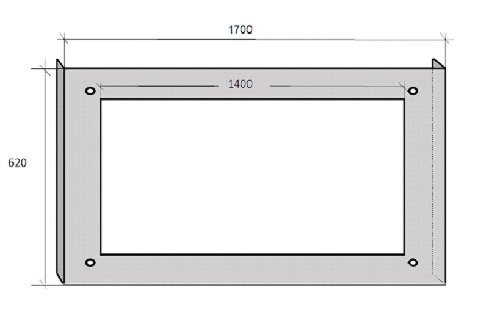
Calculation for the box
Note! All markings should be applied using a level. Otherwise, it will be very problematic to create an even and correct design.
- if the box will stand on the floor in a room or kitchen, then you need to draw three lines: two on the sides (depth) and one that will connect them (the front edge of the structure);
- a square should be attached to the lower edge of the device and vertical lines should be drawn along the wall at right angles. They should be brought up using a level;
- above the battery, these lines must be connected with a horizontal segment.
If everything was done correctly, then at the end of the markup you will receive a rectangle or a square (depending on the length of the radiator). If the box will stand on the floor, for example in a kitchen, then the markings on it should reflect its base. When deciding to close the radiator with a plasterboard wall in order to hide the pipe, the markings are done as follows:
- markup is drawn from floor to ceiling. Vertical lines are marked on the wall. The distance between them is half a meter or a whole meter. Don't forget to use the level;
- the vertical line with the help of a corner is extended to the floor. The distance between them depends on the planned distance from the battery;
- similar markings are made on the wall. Lines are drawn strictly opposite to the floor ones and parallel to them;
- then draw two lines above and below the radiator. In this case, you need to retreat 10 cm;
- on the right and left sides of the heater, lines are also drawn for the profile.
The reasons
Natural Causes: Fetal Development
The first twelve weeks of gestation are the most critical times. In the first 84 days, the speed of events resembles pictures in a kaleidoscope.
At the same time, it is necessary to have a clear idea of where the pain in the lower abdomen comes from at this time. If it hurts there, it is possible that this is not due to health problems.
And it is impossible to exclude unnecessary anxiety without clear information about where the pain comes from when everything is going fine.
It can hurt in the lower abdomen for the following reasons.
In the first fourteen days, the zygote attaches to the lining of the uterus. This can cause mild pulling pains in the lower abdomen. Moreover, the expectant mother may confuse these pains with discomfort during critical days, since she is not yet aware that she has already become pregnant.
By about 21-28 days, the chorion (the rudiment of the placenta) is formed. In this case, the villi are immersed in the wall of the uterus, and vessels are also created in the body of the fetus. The process is often accompanied by pain in the lower abdomen of the mother.
35-42 days after conception, the lumen of the baby's vessels changes. Their thickness is increasing. Due to the "reshaping" of the vascular wall, muscles almost disappear. This is the child's natural defense against vasospasm that can occur due to stress. At the same time, the blood supply in the uterus and in the external intimate organs becomes noticeably stronger - this can cause weak pulling and / or aching pains in the lower abdomen and back.
Unfortunately, painful sensations in women when the lower back is pulled in early pregnancy are also symptoms of serious pathological processes. During the period of restructuring of the body, the immune system fails, and therefore immunity decreases. This temporary phenomenon is necessary so that the female body does not reject the fetus.
- Incorrect posture of a woman leads to lumbar lordosis. Due to the swelling of the ligamentous apparatus, the ligaments and joints of the pelvis are stretched, and pain appears in the lumbar region.
- Tumors in the lumbar region and lower back contribute to the spread of pain.
- Inflammatory process in the lumbar muscles, or myositis, associated with hypothermia.
- Exacerbation of chronic diseases of the musculoskeletal system and other diseases that were diagnosed before pregnancy.
Physiological processes during childbearing are essential and often make themselves felt. There are a number of factors that can trigger pulling back pain and are directly related to pregnancy:
- The process of implantation of the ovum. At this time, the woman does not yet know that she is pregnant. The beginning of the attachment of the egg falls on the 5-7th day after fertilization. In addition to unpleasant sensations in the back at this time, the lower abdomen can be squeezed, and pinkish discharge is also permissible. The condition does not require treatment and quickly goes away on its own.
- Increased blood flow to the pelvic organs. This occurs over a period of about 6 weeks due to the formation of the uteroplacental circulation. The vessels overflow and can cause discomfort in the lower abdomen and lower back.
- Softening of ligaments and joints. The body prepares in advance for the birth process, producing the hormone relaxin. It makes the cartilage fibers elastic. In this case, the back is usually pulled in the tailbone and lumbar region.
- Braxton Higgs contractions. This phenomenon can be observed after 11-12 weeks of pregnancy. The sensations are like labor pains during childbirth, only with low intensity, and they pass quickly. The uterus at this moment becomes hard, and can stretch the back a little.
These are all signs of a normal pregnancy.
If the lower back pulls in early pregnancy, while the pain is unexpressed and does not cause any particular inconvenience, there is no cause for concern.
At a scheduled appointment with a doctor, you need to report such a symptom. Only he can judge whether diagnostic measures are necessary, taking into account the anamnesis of the pregnant woman.
In the first trimester of pregnancy, stretching in the lower abdomen, radiating to the lower back, in most cases indicates the threat of termination of pregnancy. The immediate cause of discomfort is hypertonicity of the uterus, a condition in which this organ contracts too much.
In the early stages, toning of the uterus is felt as a moderate aching pain spreading to the lower abdomen, groin and back. Pains are very similar to menstrual pains, and before the cycle is delayed, the expectant mother may not immediately understand what is happening to her.
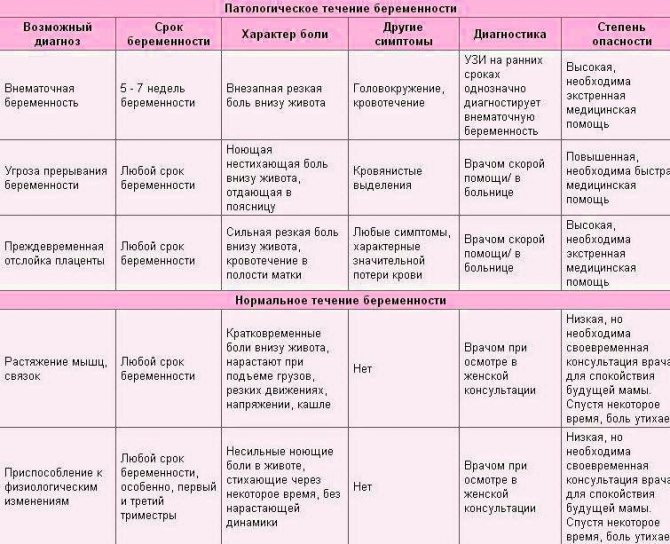

The discomfort is attributed to the usual premenstrual syndrome, and the woman does not seek help from a gynecologist, wasting precious time.
Anything can be the reason for the threat of termination of pregnancy. Hormonal disruption, pathology of the blood coagulation system, exacerbation of chronic diseases, or even ordinary stress - all this can lead to the appearance of pulling pains in the lower abdomen.
If the discomfort intensifies or bloody discharge from the genital tract joins them, the expectant mother should immediately visit the gynecologist to clarify the diagnosis and resolve the issue of preserving therapy.
At any time, pulling back pain can be one of the signs of osteochondrosis. In this case, the expectant mother notes some relief from a change in body position and after a light massage.
Often, an attack of lumbar osteochondrosis is accompanied by tingling or numbness of the legs, a feeling of crawling or pain radiating to the buttock and thigh. The best way to clarify the situation is to make an appointment with a neurologist.
After the examination, the doctor will confirm or deny the diagnosis and, if necessary, prescribe a treatment that is safe for the mother and baby.
The most frequently asked question of pregnant women to a gynecologist is whether it is normal to feel nausea and abdominal pain during pregnancy. Overly emotional persons perceive any deviations of the usual normal state of health as symptoms of illness.
It should always be remembered that the presence of the disease can be determined only after examination by a qualified doctor. Nausea and pain in the lower abdomen can characterize many diseases, so you should not draw any conclusions about their development on your own.
First of all, you need to contact a medical institution.
It is necessary to pay attention to the nature, intensity and frequency of pain in the lower abdomen, nausea and other accompanying symptoms. Comparison of the correctly provided data will help the doctor determine the likely cause of the discomfort, direct the patient to the correct tests, establish a diagnosis and begin treatment in a timely manner.
Danger of miscarriage
Quite often, women go to the doctor with complaints that they are 6 weeks pregnant, with a stomach ache. Let's see what can cause this:
- gastrointestinal problems (constipation, helminthic invasion and dysbiosis);
- disorders of the genitourinary system;
- inflammation of appendicitis or acute pancreatitis;
- the threat of termination of pregnancy or the onset of premature birth;
- placental abruption.
As a rule, there is no one answer to the question of why back hurts during pregnancy.
Discomfort is caused not by one, but by a whole complex of factors:
- the pressing effect of the gradually increasing pregnant uterus;
- displacement of the center of gravity;
- an increase in the body weight of a pregnant woman.
The uterus itself is a small cavity structure surrounded by other organs. Therefore, any increase in its size will lead to mechanical pressure on neighboring organs, including the musculoskeletal system.
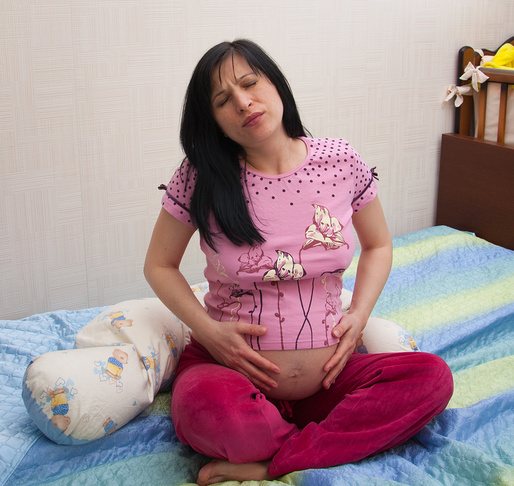

Individual parts of the skeleton are immobile structures (for example, the bones of the small pelvis), which are compressed by the pregnant uterus, which causes pain in the back and lower back.
Heating device malfunctions
The idea to close the battery with a screen arises, as a rule, among the owners of Soviet-style cast-iron radiators. Indeed, outwardly they are rather unsightly. The initially unattractive appearance is often exacerbated by years of overlays of paint layers - unevenly applied and partially burnt out.
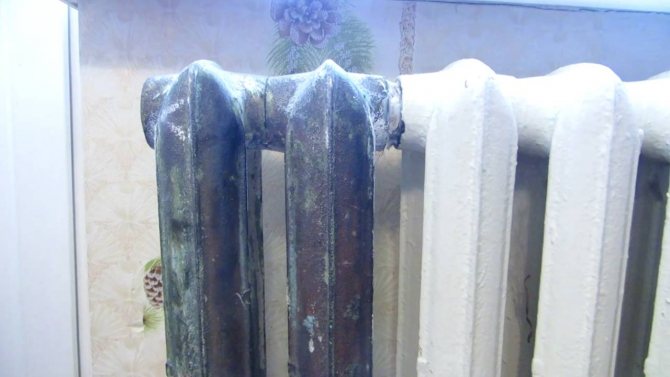

The appearance of Soviet-style cast iron batteries is a designer's nightmare.
Now for the bad news. Cast iron radiators have a number of typical problems that require free access to them.
Intersectional leaks
The essence of the problem: Paronite gaskets between cast iron sections are not elastic. Over time, they become more and more rigid.
When the sections are heated during the heating season, the gasket is compressed due to the thermal expansion of the sections, and after cooling it does not return to its previous dimensions. The nipple connection is leaking.
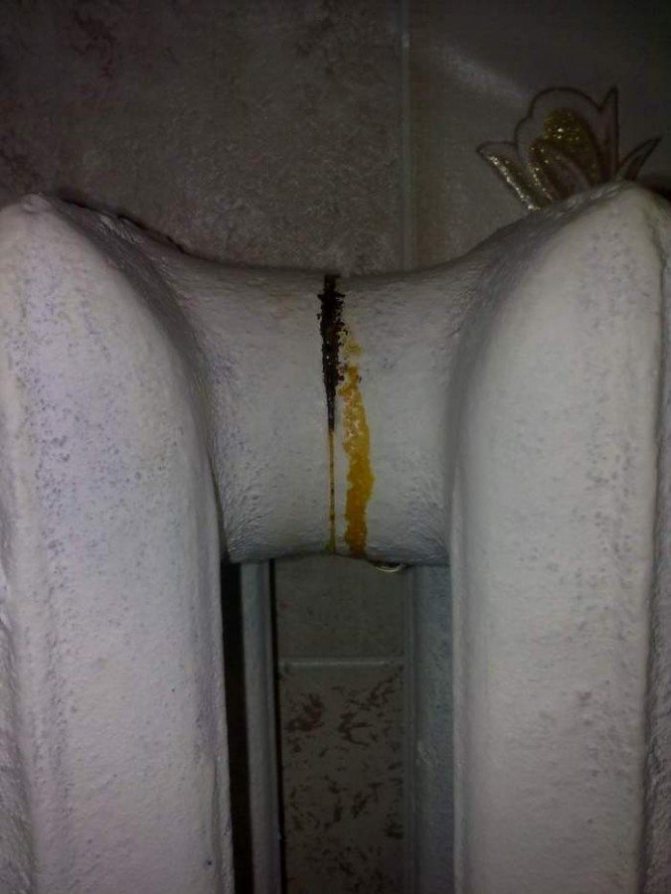

Leakage at the connection of sections is a common disease of all sectional radiators.
Elimination: The outer sections are disconnected and both gaskets are changed at the current nipple connection. The work requires access to the blind radiator plugs at the end of the radiator. If you close the battery with a dull screen and even more so hide it in a box, it will be simply impossible to unscrew the plugs and remove the sections.
Leaking locknut
The essence of the problem: a burnt out or rotted organic winding under the lock nut on one of the connections no longer seals the threaded connection.
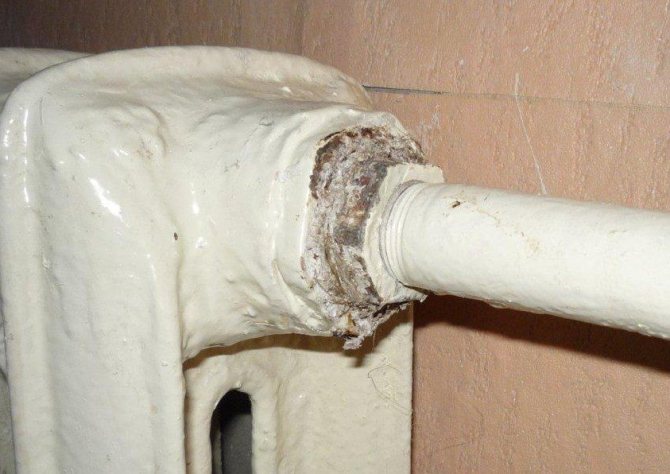

The threaded connection of the inlet with the through-flow radiator plug often becomes a place of leakage.
Elimination: when the heating riser is dropped, the lock nut is unscrewed by several turns and rewound with plumbing flax or other winding. If you close the heating radiators with a screen or box, access to the connections will be extremely difficult. You cannot turn a pipe or adjustable wrench in a confined space.
Fistula on the thread
The essence of the problem: a cast-iron radiator is connected to the supply line with a squeegee - a long thread cut on it. Steel is subject to corrosion. Through fistulas appear first of all in areas with the smallest wall thickness, that is, in the grooves of the threads.
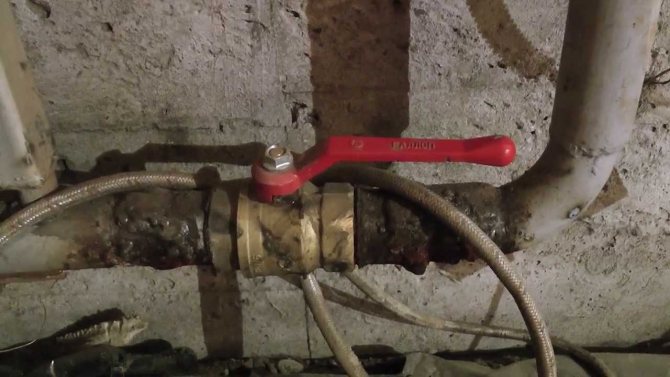

Fistulas occur where the pipe wall thickness is minimal - in the thread valleys.
Elimination: when the heating riser is dropped, the liner is cut off at the beginning of the thread, and a new squeeze is welded to it by electric arc or gas welding. If you close the radiators with a non-removable screen or put them in boxes, the welder will not be able to get to the problem area of the supply line.
A box or screen for a radiator often hides the problem from the homeowner: there is a leak, but you do not see it. You will learn about the presence of a defect in the radiator or piping from flooded neighbors or from flooding your own apartment, when a small fistula on the pipe turns into a source of serious leak.
Airlock
The essence of the problem: After the heating circuit has been reset, air remains in the heating circuit when it is restarted. Air pockets impede circulation in the risers.
Elimination: air is vented through the so-called Mayevsky taps, installed on the top floor for each riser. The taps are most often mounted in the upper blind radiator plug. And in this case, free access to the battery is needed to start the riser.
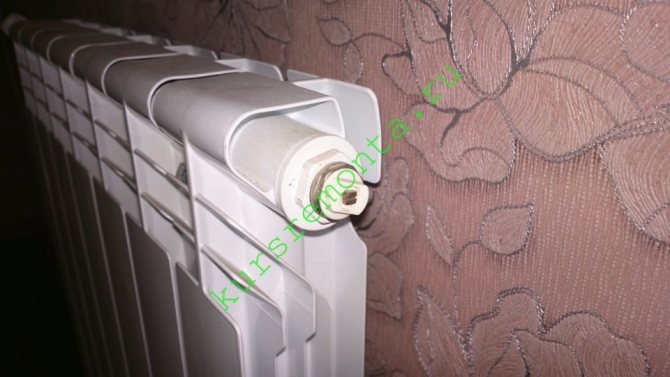

The Mayevsky crane is designed to remove air that prevents circulation in the heating risers.
Silting up of the radiator
The essence of the problem: silt and sand carried by the coolant gradually accumulate in the lower collector of the sections farthest from the supply - in the area where the speed of water movement is minimal. The outer sections stop heating.
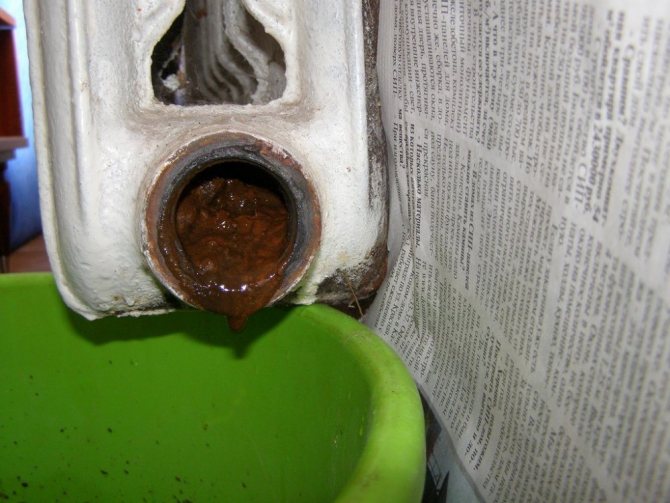

If you open an old battery, you can find that its outermost sections are completely clogged with silt.
Elimination: The sludge is flushed out of the battery through the flushing valve. A hose is attached to the tap, installed instead of one of the blind radiator plugs, through which the water is discharged into the sewer. Both the installation of the washer and the flushing itself require access to the end sections.
Types of pain and causes
Most often, it is easier to diagnose the cause of pain in the lower abdomen or back by means of its correlation with the type of sensations. This practice makes it more likely to find the real focus of the disease and to exclude deliberately incorrect assumptions.
Pulling
This kind of pain in the lower back can occur due to physiological or pathological reasons. In the case of causes, physiological symptoms can be:
- germination of blood vessels to feed the fetus;
- increased blood flow to the uterus;
- increased production of relaxin;
- an increase in the size of the uterus.
Pathological symptoms include:
- possible miscarriage;
- cystic drift, indicating the absence of the fetus as such;
- ectopic pregnancy;
- uterine fibroids;
- kidney problems;
- lack of pregnancy, as the embryo died.
In pregnant women, there are two types of possible abdominal pain: for obstetric and non-obstetric reasons. Non-obstetric causes of abdominal pain during pregnancy, these are diseases of the digestive system and organs of other systems that are not directly related to fertility.
For obstetric reasons that can cause pain in the lower abdomen and lower back, feelings of nausea, include diseases of the reproductive organs, one of the signs of which is nausea and vomiting. Causes of nausea and abdominal pain of an obstetric nature: uterine tone, threat of miscarriage and termination of pregnancy, overstrain of the ligaments that support the uterus, ectopic pregnancy, placental abruption and nutrition that is unsuitable for a woman carrying offspring.
We will consider some of these reasons in more detail below.
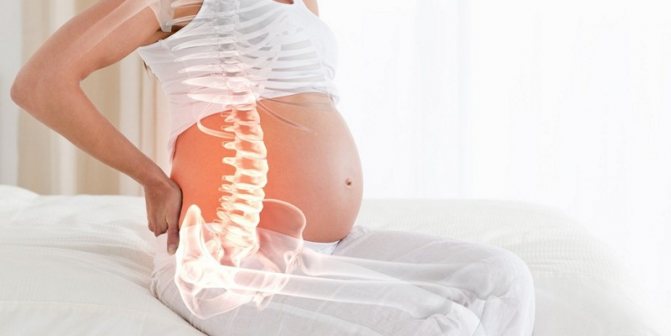

Various abdominal pains during pregnancy occur in 90% of cases, and at different times. They do not necessarily manifest themselves in pathology, they can also be physiological.
They are conventionally divided into 2 main groups: pathological and physiological. Pathological pains can be obstetric and non-obstetric, i.e. not related to pregnancy.
Obstetric pathological pains include those that threaten the loss of a child and termination of pregnancy: threatening miscarriage, ectopic pregnancy, placental abruption.
Stages of installation work
Finishing the battery with plasterboard (or any other finishing material) with your own hands is possible only after the completion of the preparatory work. When the markup is ready, you can start mounting the profile frame. For this you need:
- first, you should fix the profiles that should be located on the walls;
- marks are made in the wall with a screwdriver, and the necessary holes are drilled with the help of a perforator along the entire length of the profile. Dowels are inserted into them;
- press the profile to the holes and screw them with screws. Mounts must be installed every 15-25 cm;
- further, by analogy, you should fix the guides that are adjacent to the wall;
- after that, you need to install the profiles in the depth of the structure. To do this, they should be cut into suitable segments and attached to long guides that run vertically;
- we connect the profile from above and below with long segments.
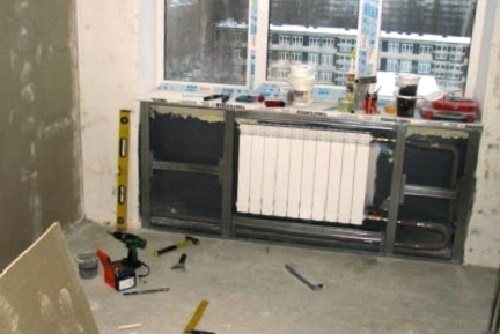

Finished frame
After creating the frame, you can proceed to fastening the material. Plasterboard finishing involves the following actions:
- we attach sheets to profiles and make notes in the places of the cuts;
- cut the sheets into the desired pieces;
- we fasten them to the frame with screws. The interval between them should be 10-15 cm;
- to create even and neat corners, use an aluminum corner and putty.
At the end of the installation work, the plasterboard box is ready for final finishing. It can be painted, wallpapered or tiled. Installation of a plasterboard wall frame involves the use of longer profiles that will run vertically. In all other respects, installation work is carried out in a similar way. You can sew up any heating device using drywall with your own hands. To do this, you only need to correctly markup and carry out installation. Thanks to this, your battery will be hidden from view, while it will continue to heat the room, as before.
We hide the pipes in the toilet behind drywall
How to make a decorative fireplace out of drywall with your own hands
Side hurts during pregnancy
During this period, a number of physiological changes occur in the abdominal cavity - tissues soften, the uterus grows, internal organs are displaced and compressed. All of these processes are often accompanied by moderate pain.
Short-term pulling pains, aggravated by sneezing, a sharp change in position, are explained by the increased load on the ligaments that support the uterus. A good rest, a back massage, and a warm bath will usually help relieve this condition.
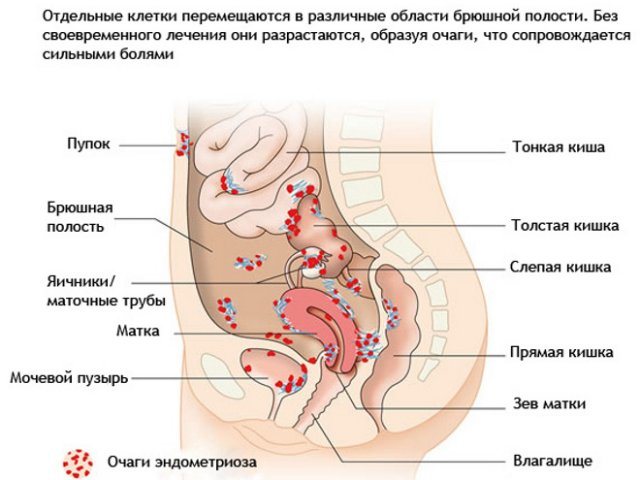

But if the pulling pains do not stop and the abdomen becomes hard, then we can talk about hypertonicity - a threatening condition for bearing a fetus. This problem requires medical intervention.
To prevent stretching of the ligamentous apparatus, it is recommended to wear a bandage.
Many women in position ignore pain in the legs, since they see their cause only in increased weight. However, behind painful sensations in the limbs, serious pathologies can also be hidden:
- Dropsy of pregnant women is a sign of the most dangerous complication of pregnancy - late gestosis. With this disease, the legs swell a lot, get tired quickly, and do not fit into previously comfortable shoes. When pressed with a finger, the indentation at the site of the edema does not disappear immediately. Treatment of dropsy consists in the appointment of diuretics, a salt-free diet, and fluid restriction.
- Infectious arthritis is accompanied by severe pain, difficult movement in the joints. The periarticular tissues look edematous and hypertensive. This disease requires treatment in a hospital, where the safest therapy will be selected for the pregnant woman.
- Varicose veins are characterized by heaviness, tension in the legs, the appearance of varicose veins and vascular network, cramps of the calf muscles, and edema of the legs. As a rule, drug treatment for pregnant women is not carried out. To stop the progression of the disease, a woman is advised to wear compression stockings.
- Inflammation of the superficial veins is manifested by high fever, induration, redness, and severe pain in the affected area. Deep vein thrombophlebitis is not so noticeable: there is only a bluish color of the leg and slight swelling. Painful sensations may be absent altogether. Such problems with blood vessels require mandatory treatment, since disturbances in venous blood flow can lead to the most unpredictable consequences.
Contraindications of the drug method
The use of medications in the treatment should be in accordance with the recommendations of the doctor. Before starting a course of any medication, you need to pass a test for possible allergens. It is also worthwhile to competently combine the drugs in case you need to take several drugs at the same time. Otherwise, the fetus may die or have complications during life.
Special gymnastics
There is a wide variety of possible physical activities for pregnant women, including group sessions.
Why does my stomach and back hurt? There can be many reasons, such back pain is characterized as shingles, it can cover the trunk at the level of the lower thoracic and upper lumbar vertebrae. The cause of this pain in the abdomen and back may be a peptic ulcer or chronic cholecystitis, pancreatitis, as well as girdle pains are characteristic of heart disease, lung disease and myocardial infarction.
weight gain should be monitored. The rate is up to 10 kg gradually during pregnancy;
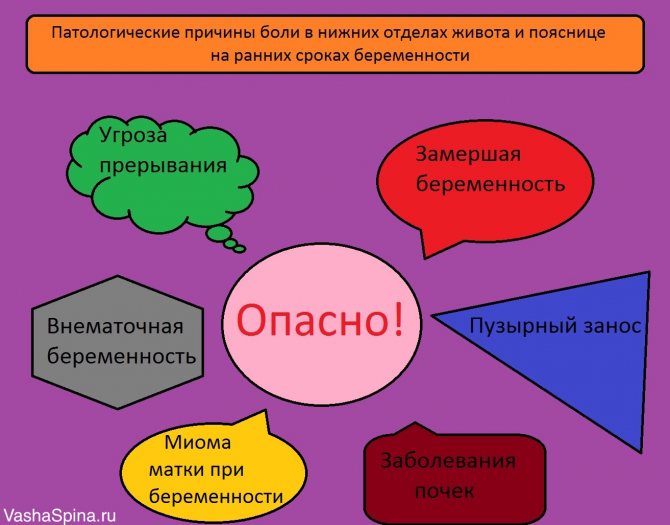

A little pain begins, you should immediately go to the hospital. After a doctor's examination, it will become clear whether the baby is safe or is in danger. Sometimes drastic measures are needed, for example, surgery or inpatient conditions. But you should see a doctor on time. A pregnant woman is responsible for the life of a child no less than for her own health!
Due to the enormous difference in the degree of danger of various causes of pain during pregnancy, an accurate diagnosis must first be made.
Abdominal pain during pregnancy is a fairly common occurrence, it can be caused by many factors, so it should be approached to eliminate them only after a thorough examination.
It is difficult to find a woman who, during pregnancy, would not experience pain in the back and lower back, unfortunately, this phenomenon periodically accompanies the expectant mother during different periods of bearing the baby.
Joint pain is a fairly common occurrence that occurs in pregnant women.The problem is that during the period when the fetus is forming and growing in the womb, useful substances (in a large amount of calcium) leave the woman's body.
It is the lack of calcium that becomes the main cause of joint pain during pregnancy. As a rule, aches occur in the back, legs and pelvis.
This ailment is easily treatable, it is enough to saturate the body with calcium in combination with vitamin D, which allows the mineral to be well absorbed. Proper nutrition in many cases is a panacea for joint disease during pregnancy; it is worth paying attention to foods such as fish (herring, salmon, tuna), liver and egg yolk.
At the same time, expectant mothers should not rely on their own knowledge in the field of medicine and self-medicate, it will not be superfluous to contact a specialist who will help determine the cause of the pain and suggest a recipe for getting rid of it.
A person experiences a sore throat throughout his life, but if it is understandable and not dangerous during a common cold in the absence of pregnancy, then during the period of bearing a child it is a serious threat to the unborn baby.
When sore throat and dry throat appear, you should pay attention to the state of the air in the room, if it is too dry, it makes sense to purchase a humidifier, this way the problem will be solved. However, not all health issues can be removed so easily.
Tonsillitis with purulent discharge caused by streptococcus can lead to fetal infection and sepsis. In rare neglected cases, antibiotics are prescribed, their intake is less dangerous than the development of the disease.
If a pregnant woman has inflamed tonsils, but there are no obvious signs of an open infection, it makes sense to use Hexasprey, Lizobact lozenges and Tantum Verde spray. During pregnancy, it is strictly forbidden to use Lugol's ointment to treat the throat.
During pregnancy, a significant dose of calcium is washed out from the body of the expectant mother, part of the useful mineral is taken by the fetus. As a result of the lack of this component, convulsions occur, bones ache and teeth problems are felt.
To avoid the problem, you should eat foods such as potatoes, cabbage, and dairy products. Often during pregnancy, the muscles of the lower leg cramp, this process occurs due to a shift in the center of gravity of the woman.
In this case, the following exercises can be advised: - stand on your toes and stretch your legs, as ballerinas do; - while lying on a flat surface (on your back), rest your feet against the wall with great pressure.
Convulsions can be made less frequent by placing a pillow under your feet during rest, thus, blood will drain from the vessels of the lower extremities and the risk of painful sensations will be significantly reduced.
The first signs of pregnancy appear when the embryo is introduced into the lining of the uterus. This process is called implantation. During this period, a woman still does not know what is happening in her body. The symptoms of implantation resemble premenstrual syndrome (PMS): pulls the lower abdomen and lower back, light pink discharge is possible.
After the embryo is implanted, a common circulatory system of the mother and child is formed, the body begins to produce pregnancy hormones - hCG and progesterone. Progesterone relaxes the smooth muscles in the uterus, and at the same time in the gastrointestinal tract, thereby disrupting normal physiological digestion.
Abdominal pain scares expectant mothers most of all, as it is associated with the threat of termination of pregnancy. However, in most cases, abdominal pain is associated with the pregnancy itself, and pregnant women have more stomach ache than non-pregnant women. The uterus grows, its ligaments stretch and this causes pain, especially when bending, moving.
In addition, each organism reacts differently to the onset of pregnancy.Some women may experience sipping, aching, stitching pains in the abdomen, and pregnancy is normal.
During pregnancy, the uterus periodically contracts and, as it turns out, this is absolutely normal. The longer the period, the more contractions of the uterus occur, this may be accompanied by a feeling of hardening or minor pain. During long periods of pregnancy, the uterus may react to abdominal strokes, fetal movements, and other stimuli. Mild abdominal pain is intermittent, short-lived, and usually resolves with rest.
A dangerous situation is when abdominal pain during pregnancy becomes regular, cramping, increases in strength and frequency, accompanied by bloody or profuse watery discharge. This situation requires immediate medical attention.
The disease during this period is accompanied, in addition to pain in the lower back, high fever and inflammation, which is confirmed by the results of laboratory studies. The doctor prescribes antibiotic therapy that suppresses the infection and has minimal effect on the fetus.
If there is no edema, then it is recommended to increase the amount of fluid taken, but under the control of urine output. During this period, diuretic drugs and caffeinated drinks should not be taken. Shown is the reception of a decoction of oats and fruit drink, made from cranberries, which has an antibacterial effect and increases urine output.
The doctor prescribes treatment on an outpatient basis (at home) or, if necessary, hospitalizes in the urological department of the hospital.
Is the pain or feeling that pulling the lower back dangerous during pregnancy? In what cases is it unnecessary to worry about this, and in what cases should you be wary?
- What products to strengthen the lower back
Pain sensations fixed in the lower abdomen in women are divided into:
- Gynecological;
- General.
What to do if your back hurts during pregnancy, how to cope with the pain?
From the moment of fertilization of the egg, the hormonal background of the female body changes. If, without pregnancy, the production of female sex hormones occurs in a shift mode, now they are synthesized differently.
Not one replaces the other, but both are developed at the same time. Due to this restructuring, the pregnant woman adapts to the successful bearing of the child.
The load on the body increases, and therefore some diseases that did not cause inconvenience before may be exacerbated. If your back hurts during pregnancy, then something is going wrong.
By itself, pregnancy should not be accompanied by pain and discomfort.
So why does the back hurt during pregnancy, what is the reason?
Low back pain during pregnancy affects one third of women. Basically, this applies to those who had problems with the musculoskeletal system before pregnancy:
- curvature of the spinal column;
- osteochondrosis.
All women with these changes are at risk of developing back pain during pregnancy.
Causes of back pain during pregnancy
Are you having a missed period? This sign most often indicates that you will soon become a mother, and even more so if the test also showed a positive result. Nevertheless, many women, even before the delay, begin to suspect about the onset of pregnancy. They learn about this from their bodies.
The very first sign to look out for is when the lower abdomen and lower back are pulling. Almost all women face such painful sensations. It's just that someone does not attach much importance to this, but for someone they bring certain inconveniences, even discomfort. If the expectant mother before pregnancy was worried about abdominal pain before the onset of menstruation, then she simply may not pay attention to them.
Mild pain can be considered the norm, but only if they are of a short-term nature and do not cause discomfort in the expectant mother. Cramping pains are also permissible, in most cases indicating a sprain of the pelvic ligaments.
If it constantly hurts, pulls the lower back and abdomen, you should immediately consult a doctor. Often, such sensations may indicate the threat of termination of pregnancy, so it is better not to postpone with treatment.
Everyone knows that pain signals that something is wrong with the body. But during pregnancy, this theory is biased, since the body undergoes a number of hasty changes, because in 9 months the bone skeleton, hormones, and every cell of the body change.
Pulling pains in the lower abdomen and lower back are caused by a number of physiological processes:
- For 1-2 weeks, the fetus is attached to the mucous membrane of the uterine cavity. This process provokes such pains, although some women mistake them for PMS.
- At 3-4 weeks, chorionic tissue is formed, which will soon become the placenta. The villi are immersed in the wall of the uterus and form vessels, which will subsequently create a blood supply to the embryo. This process is sensitive and also painful.
- In the first trimester, the uterus enlarges, which causes girdle discomfort.
- In the second and third trimester, the fetus is actively developing and pressing on the internal organs, delivering constant, pulling pains.
- Divergence of the pelvic bones. This process is quite painful and unpleasant, but at the same time, natural.
When the stomach and lower back hurts during pregnancy systematically and acutely, then this should not be attributed to physiological processes, since pain syndromes in this part of the body sometimes signal the presence of any pathologies.
When the center of gravity in the body of a pregnant woman shifts, and this happens in the second or third trimester and the belly obviously looks out, then most women suffer from pain in the lower back. Why is it so?
Physiologically, it has developed that the child, when ready for birth, sinks into the mother's pelvic floor and thus presses on the internal organs, the vagina and the sacral part of the back. The mother's abdomen may sink in the second trimester, which will cause her a lot of discomfort. Therefore, pain in the lower back is not always a symptom of something dangerous to the health of a pregnant woman.
And when does pain “speak” of danger? It is important to distinguish physiological pain from signaling pain. What pain is not natural in the lower back:
- Backache. If you feel a stabbing pain shooting, then this is a violation of the musculoskeletal system or a clamping of one of the nerve roots. In order to avoid the formation of hernias, the pregnant woman must consult a doctor.
- Unilateral back pain. If only one part of the lower back hurts (left or right), then this is a reason to worry. It can be cystitis, urolithiasis, infection, etc.
- Bloody issues. If the lower back hurts, and there is bleeding from the vagina, then you cannot do without an ambulance. This indicates either a threat of miscarriage or placental abruption.
- Cramps and pains in the groin. Is the lower back accompanied by pain in the groin, which can radiate to the thigh? Then it's a bladder or genital infection.
It is difficult to determine what kind of pain pursues a pregnant woman, since a woman during this period is suspicious and tends to exaggerate. But, if you are overcome only by physiological pain, then you can also cope with them through some exercises and advice.
Still have questions? Ask our readers and get an answer! →
A little bit of common sense
Comrades, let's turn to common sense. Why do we buy or make with our own hands a decorative screen for a battery?
The answer is obvious: to make it beautiful. The dull look of cast iron sections clearly does not decorate your home.
And what prevents from changing a cast-iron battery to a modern bimetallic one? Its appearance is much better. As a bonus, the buyer will receive an increase in temperature in the living room or in the kitchen: the heat transfer of the bimetallic section is one third higher than that of the cast iron section (190-205 watts versus 140).
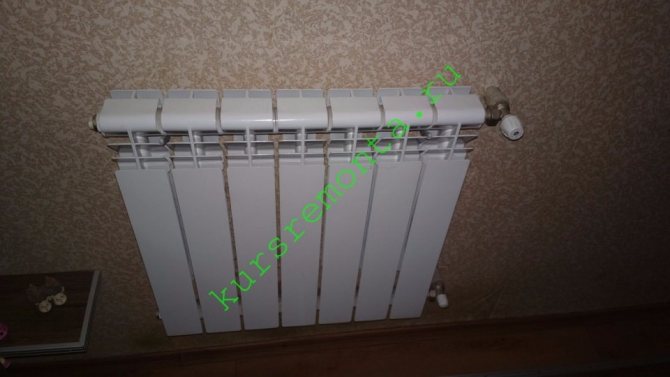

Modern sectional radiators fit perfectly into any design.
Do you think the replacement will be too expensive? I dare not agree. Let's refer to the catalog of the Leroy Merlin online store:
| Picture | Description |
| Battery screen... The size is 63x83 centimeters. Price - 2316 rubles. |
| Bimetallic radiator. The size is 8 sections. Price - 2295 rubles. |
So, the best way to decorate old cast iron batteries is to replace them with new ones.
Diagnostics
Anamnesis
Anamnesis collection is a survey of the patient and his family. The doctor needs to know all the biographical details of the patient from childhood. This is done in order to more closely track the development of pathology. It is most acceptable to use this method when it comes to diseases transmitted by heredity or those that were acquired in childhood and passed into the chronic stage.
Anamnesis is carried out according to medical confidentiality. One of the essential criteria for success is trust between doctor and patient. This is due to the fact that the collected data must be completely reliable, otherwise there is a possibility of making an incorrect diagnosis or prescribing the wrong treatment tactics.
Analyzes
Usually, examination and questioning are carried out in parallel with each other, however, sometimes the questioning is replaced by anamnesis, and examination by analyzes. The theoretical component remains the same.
However, there are a number of tests that must be carried out independently every six months or a year to diagnose the body. These include:
- clinical blood test and blood sugar test;
- electrocardiogram;
- fluorography;
- blood chemistry;
- mammography.
https://www.youtube.com/watch?v=AAT6WpMxl_w
The essence of these analyzes implies the prevention of dangerous pathologies that can be cured when they are at an early stage.
X-ray
X-rays are essential for a basic examination of specific parts of the body. It works on the principle of overexposing a region of a film, while X-ray waves pass through the body. This creates a snapshot. It should be noted that the use of X-rays is the safest than the use of CT or MRI.
Necessary tools and materials
To make a drywall box yourself, you must have the following tools with you:
- building level;
- drill with screwdriver nozzle;
- screws and dowels;
- metal knife;
- puncher;
- pliers;
- tape measure and pencil;
- ruler corner.
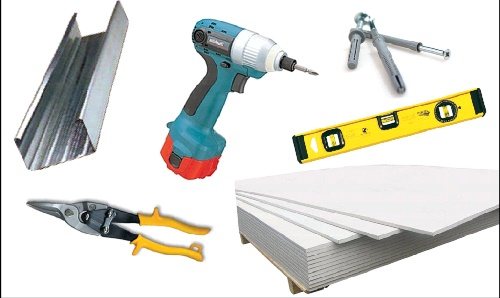

Required tools and materials
In addition, to close the radiator, you will need the following materials:
- drywall sheets. You can use both ceiling and wall;
- metal profiles with a U-shaped section;
- putty.
Protective screens in the room decor
Before you close the battery in the room beautifully, you need to pay attention to the style and color of the interior, choose a decorative screen that matches the overall design of the room. When choosing a protective cover for a battery, the consumer is faced with a difficult choice, because items of different shapes, sizes, colors, designs and designs are on sale. In addition, they are made from excellent materials.
A properly selected screen can become not only a functional element, but also an interior decoration.
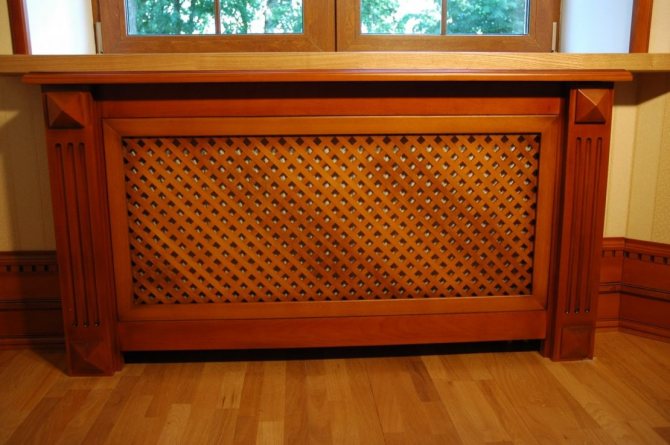

Together, the style and purpose of the room are taken into account:
- In a classic interior, you can install a wooden lattice or box. It is important to choose the style of decoration and color of wood. MDF overlays look no less impressive, but they are much cheaper.
- In a modern interior, it is advisable to use a glass screen.It can be with or without a discreet pattern. If you need to visually expand the room, then preference is given to the glossy glass surface.
- In a room decorated in ethnic or Japanese style, designs are used from bamboo and rattan, as well as other natural materials.
- It is better to install a screen-box in the bedroom, and put a soft covering on top of it, so that you get a cozy sofa near the window, on which it is so pleasant to sit on cold winter evenings with a cup of tea. The same option is suitable for a teenager's room, only the colors of the structure are chosen brighter and more daring.
- The lining on the heating battery in the children's room should be safe for the little owner, therefore it is better not to use forged elements and panels made of materials that emit toxic substances when heated. The best option is a wooden structure with beveled corners.
It is advisable to install metal screens for batteries in the kitchen, where there is a high probability of contamination with soot and grease. Plastic pads are suitable for bathrooms and toilets, because they withstand high humidity.
What are screens for radiators and what are their functions
The battery cover is an element that covers the visible part of the radiator. Products are produced with perforations for moving heat fluxes, differ in size, material of manufacture and method of installation.
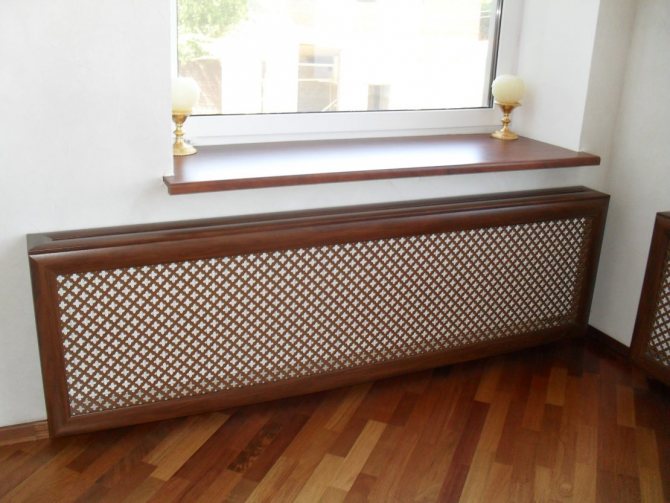

The radiator screen is useful in the following cases:
- if the wall behind the device or the radiator itself has lost its aesthetic appearance;
- to eliminate the threat of cutting yourself on the hard edges of the batteries;
- when it is necessary to give the room a uniform style;
- to protect long curtains from fading.
The function of the decor is the same - to give aesthetics without reducing the efficiency of the devices, therefore, continuous covers are not placed on the batteries.
You should also look at the placement of holes, slots:
Connecting bimetallic heating radiators and installation costs
- Openwork screens or perforated plates throughout the body are considered to be of the highest quality. Such linings do not restrict the circulation of heated air flows, do not interfere with its flow into the room.
- Slots only along the front large panel. In this case, the heat will go to the center of the room, and if the battery is hung under the window, the cold air from the opening is not blocked.
- Top perforation. Such panels are convenient for cutting off cold streams from the window, but are not very suitable for heating the entire area of the room.
Important! Regardless of the shape of the cover, the bottom must be open. Otherwise, cold air from the floor will not enter the battery for warming up. Perforation should occupy at least 50% of the pad area, otherwise heat transfer will decrease by 40-60%.
Niche for the battery. Features of installing a battery in a niche
Adequate ventilation of the radiator is essential for heating efficiency. The niche under the battery makes it difficult for air to move around the device. This leads to a decrease in heat transfer. If you do not take this factor into account when choosing and installing a radiator, then it will not give off the required amount of thermal energy to the air. Thus, the room will not be warm enough, and excessive heating is possible in adjacent rooms.
Installation of a radiator in a deep niche under a window leads to an average loss of 5-10% of its thermal power. In addition, if a decorative screen is installed, another 15-20% of thermal energy is lost. These losses are compensated by an increase in the number of sections, which must be taken into account when calculating.
Correct placement of the device in the niche for the radiator also plays an important role. In this regard, the following basic requirements are imposed:
- the size of the battery in width should be 50-75% of the niche width;
- the axis of the radiator must coincide with the axis of the niche;
- the distance from the radiator to the floor must be at least 12 cm;
- the distance to the windowsill is at least 5 cm;
- the distance between the wall and the back of the battery is 2-5 cm.
It is best to mount radiators with high heat transfer characteristics in a niche. The optimal solution for installation will be aluminum (for stand-alone systems) and bimetallic (for centralized systems) Ogint radiators.
Due to their high heat transfer, their use will not require a significant increase in the number of sections, which is of great importance given the limited size of the niche. At the same time, all Ogint radiators are characterized by high reliability and long service life.
Is it possible to make a battery box out of drywall
The screen in the immediate vicinity of the radiator reduces heat removal from its surface, and this impairs the efficiency of the heater. But not in the case of a plasterboard box for heating radiators. It is enough to give an example of the design of electric convectors, in which the heating element is located in a closed case with two rows of holes - from the bottom for the entry of cold air, from the top - for the exit of warm air. Such a device increases the convection speed, due to the fact that the box plays the role of an air duct.
The only drawback of this method is that the battery works for heating both as a convector and as a radiator, and the screen will absorb some of the infrared radiation. To compensate for these losses, holes are cut out in the front wall of the box under the plasterboard battery, or a factory decorative grille screen is installed as a front finish, and the wall behind the radiator is trimmed with a material with a reflective surface (for example, foil foam flex).
